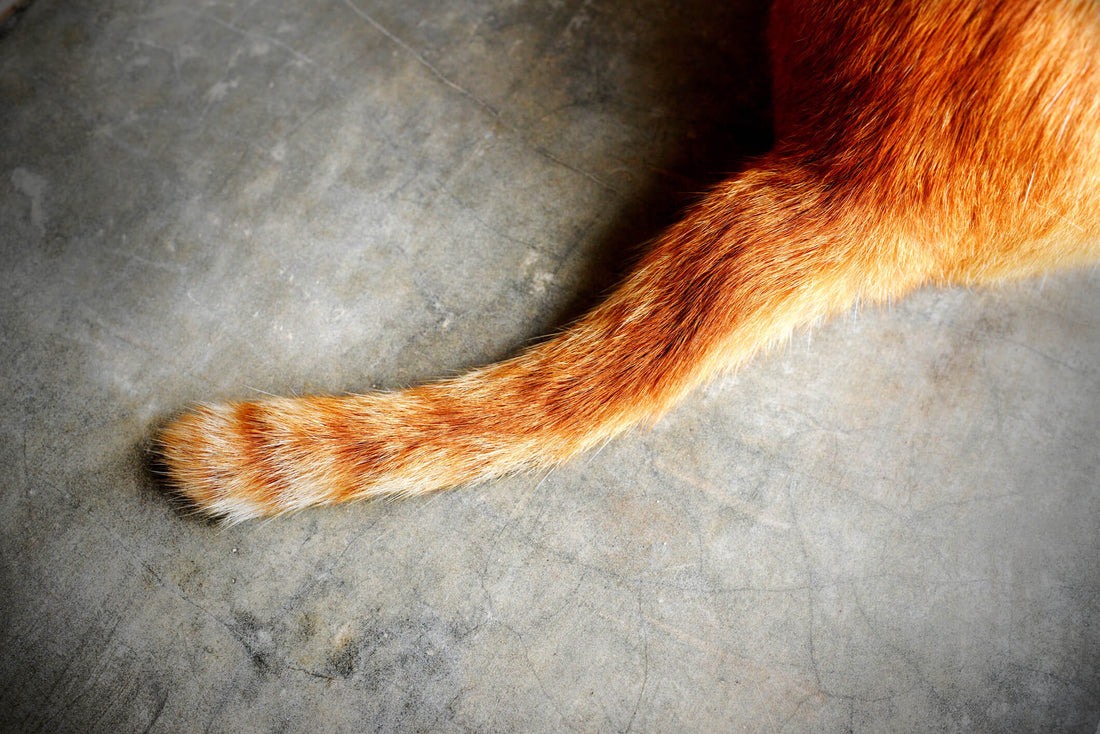
5 Common Cat Tail Injuries and How to Spot Them
Cats are inquisitive creatures. Unfortunately, their curiosity sometimes gets them into situations where they end up injured. Cat tail injuries, in particular, are quite common among the feline community.
While most cat tail problems can be treated easily, it’s important to spot these injuries before they become much worse. Cats use their tails to navigate and communicate in the world, and a tail injury can be extremely painful for them!
If you think your cat is exhibiting any of the symptoms mentioned below, then it is best to bring them to a veterinarian as soon as possible. The sooner your cat gets treatment, the easier it will be for the injury to heal.
1. Broken or dislocated tails
A cat’s tail is made up of several bones call vertebrae that can become injured in many different situations. For example, if your cat’s tail has been run over or was caught in a fence, then the bones may have been broken, fractured or dislocated.
Some of the symptoms of a broken or dislocated cat tail include noticeable limpness, minimal tail movement and signs of pain in your feline. Your kitty probably won’t let you near your tail and might hiss or swat if you attempt to touch it.
If you notice any of these symptoms, contact your vet immediately. They can determine the severity of your cat’s injury using X-rays and other scans, then make a plan for treatment. Depending on the severity, your cat’s tail may heal on its own or might require an operation.
2. Bite wounds
Cats sometimes get into fights with other cats, dogs or any number of creatures, especially if they roam outside. These fights might lead to tail bites.
Bites on a cat’s tail could eventually become infected and cause major pain to your furry friend. If you notice bleeding, swelling, hair loss or a puncture wound on your cat’s tail, these could be signs of a bite wound.
To treat a bite, your vet might recommend flushing the wound with a syringe. There are also plenty of antibacterial products available to cats, which can help keep wounds free of infection. You’ll want to monitor your cat after a bite to make sure they did not contract any diseases from the offending animal.
3. Self-inflicted damage
Sometimes, cats accidentally inflict damage on their own tail. If a cat has itchy flea or tick bites on their tail, they might scratch, bite or lick the area until hair loss or an abrasion appears on the skin. These abrasions might then become infected and inflamed. Abrasions can be quite uncomfortable for cats and may prevent them from sleeping properly.
Just like a bite wound, abrasions should be properly cleaned to avoid any infection. If you notice the abrasion increasing in size or getting redder, then you should see your cat’s veterinarian immediately.
.jpg)
4. Infection and inflammation
As you can see, infections and inflammation in a cat’s tail can be caused by any number of things—even the cat themselves. The important thing is that you be aware of these infections and know when it’s time to take your cat to the vet. Look for swelling, redness, discharge and bleeding along your cat’s tail.
Unchecked infections can spread to other parts of your cat’s body, so fast treatment is essential to their health. They might need topical or oral antibiotics to remove harmful bacteria or an anti-fungal treatment to eradicate an overgrowth of yeast.
Infections and inflammation can cause great discomfort for your cat. If they are going through infection treatment, pay attention to their stress and pain levels and consider medications or supplements to prevent them from getting too agitated.
5. Tail nerve damage
Nerve damage is one of the most serious problems to afflict a cat’s tail. This type of damage might be caused by trauma, like a car accident or even a harsh bite.
Like with a broken tail, nerve damage in cat tails is usually marked by limpness, swelling and the inability to move it properly. Depending on where the damage is located, nerve damage can even cause your cat to have trouble using the litter box.
Nerve damage often needs surgery to rectify—especially if it’s causing problems for your cat’s back legs or bowels. Your vet will be able to determine the best course of action after examining the extent of the damage.
Keep your cat’s tail safe and healthy
The best way to prevent cat tail injuries is to monitor your cat to make sure they are safe and avoid letting them outside where they could be attacked by another animal or stuck in a dangerous situation. Preventative care against fleas and other insects will also help reduce the risk for infections and abrasions.
However, even with the best prevention, some cats will experience injuries over the course of their lives. You know your cat better than anyone else, so if you notice something is off with their tail, then it’s probably best to take your furry friend to the vet.


